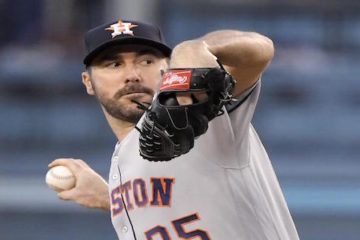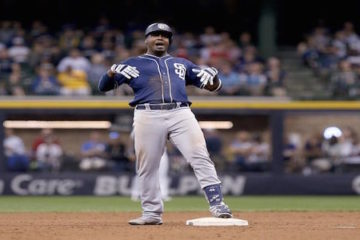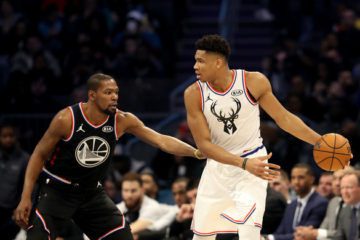2014-15 Fantasy Basketball: NBA DFS Primer

After an extremely painful MLB summer grind, waking up each and every day hoping that somehow the NBA season was here, it finally is! We are now five days away from the start of my favorite, and best, DFS sport (though I’m really loving NHL this year), so there’s no better time than now to review what it takes to be a winning player.
I started NBA two seasons ago. Of the four major sports, I knew by far the least about basketball. I got into DFS toward the end of baseball season, fell in love with it, then realized that I had to either learn basketball, or wait a very long time to be able to play again. The latter simply wasn’t an option. In two NBA seasons, I went from knowing nothing, and spending the first half of my first season making every mistake you could possibly think of, to ending last NBA season as the 14th ranked player according to RotoGrinders rankings.
One major leak I see with both experienced and inexperienced players is the misuse of the concept of value. In case you are not familiar, players have a target score they are trying to achieve with their lineups. On DraftKings last season, something in the range of 275-300 would have been considered a very good score on most nights. This will probably drop now that positional flexibiltity has been removed.
Assuming your target score is 300, and you have $50,000 in salary with which to work, your goal is 6 points per $1000 that you spend. The mistake that players make is treating a $10,000 player the same as a $3,000 player. It’s extremely difficult for the stud players, often priced around $10,000 or more, to achieve “value”. When you pay that high of a price, you’re also paying for a player with a high floor that won’t tank your lineup with a dud performance.
Too often, minimum priced players are recommended who, at best, will just barely hit that supposed value threshold. Unfortunately, even if that player does hit that target, you’ve put youself in a situation where your higher-priced players require herculean performances in order to keep you on pace for a great score. A great example of this is Carmelo Anthony. Anthony was a daily trap on DraftKings as his bloated $10,000 salary was always a poor investment. However, you could always find him in several lineups along with some minimum priced players that had a ceiling of 18, but a floor of about four. It is imperative that you understand which cheap players are worth targeting and which need to be avoided.
Correct roster construction will only get you so far. Injuries have more of an effect on NBA than any other sport, and it’s not even remotely close. One injury can turn a second unit player into the single best play of the entire evening. A player missing from the starting lineup will often result in the rest of the starting unit taking on more scoring responsibilities. Sometimes it’s an even distribution, and other times a player who is normally a secondary scoring option will take on such an increase that they become an incredible value. Injuries will determine whether you take a balanced approach to lineup construction or go the stars and scrubs route.
As if it isn’t difficult enough to know how a team is going to change offensively when a player is forced to miss time, often times you won’t have a clue a player is going to be out until right before tip off. Somtimes you won’t know until it’s too late. There are no injury reporting protocols in the NBA. If you’re serious about being successful in basketball, you need to be glued to twitter for the last 30 minutes or so before the games start. Make sure you are following every team’s beat writer or writers. If you play on a late swap site like DraftKings, continue to check twitter as the later games start.
There’s no easy way to know who is worth targeting and who is a trap when an injury comes down. The knowledge comes through experience and paying attention to how teams operate. This season I will do my best to address the possible injuries that are known, but due to the nature of the sport, it will be impossible to analyze news that comes very late in the day.
In future articles, I will discuss many of the topics mentioned in more depth. As the season progresses, I’ll be able to give more concrete examples of what works and what doesn’t. Not only that, but I can show why and how the events of the day changed the landscape of DFS on a particular night. My goal isn’t simply to give picks, but to illustrate my thought process with those picks and teach readers how to get to those picks on their own. Best of luck to everyone this season. Let’s make some money together.






